This Is the Deadliest Job in America, Study Says

Every occupation has its risks, whether you’re regularly exposed to pathogens as a healthcare worker or find yourself sore after a long day on your feet waiting tables. However, there are certain jobs that are downright deadly—and they’re not necessarily the ones you think. Using data from the U.S. Bureau of Labor Statistics Census of Fatal Occupational Injuries, business insurance company AdvisorSmith studied which jobs in the U.S. have the highest work-related fatality rates. All the jobs listed have at least 500,000 workers in said field in the U.S. and 263 professions were considered in total. Read on to discover which job was ranked the deadliest occupation in America.
RELATED: This Is the Deadliest Car in the U.S., According to Data.
25
Mining machine operators
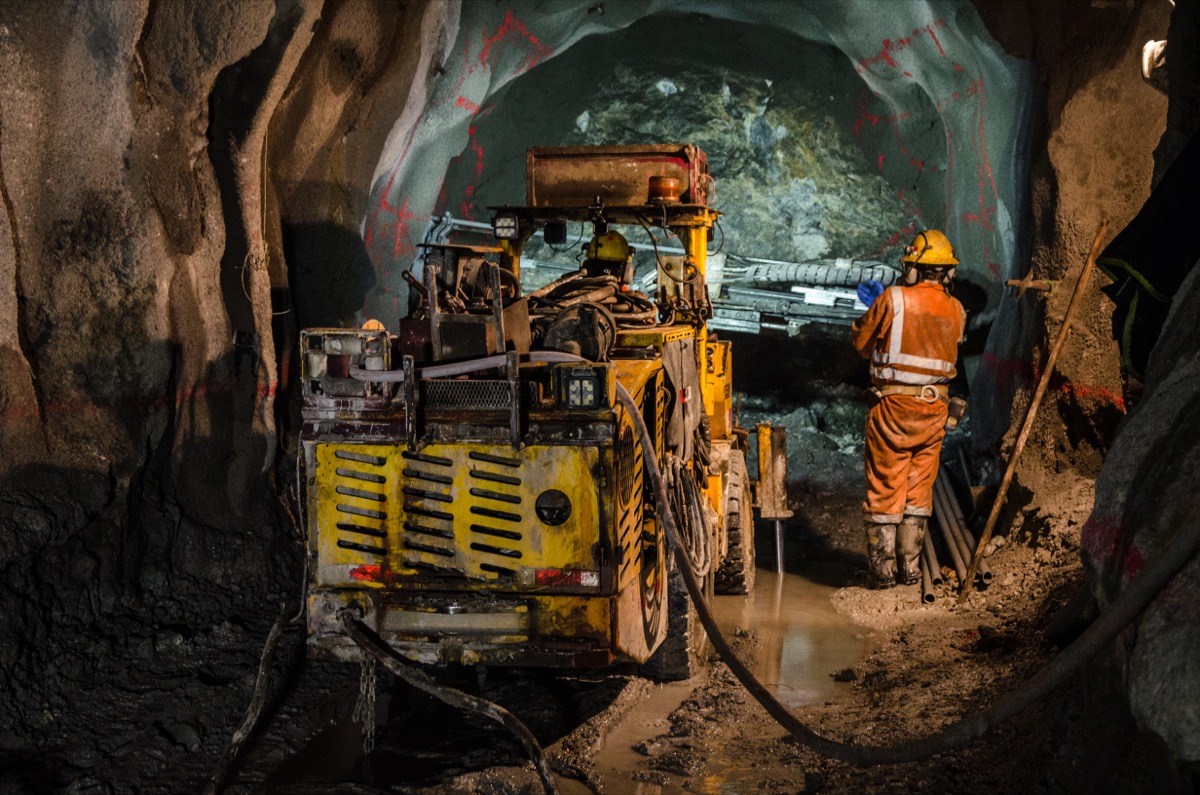
Fatal injury rate: 11 per 100,000 workers
In 2018, nine mining machine operators in the U.S. lost their lives in workplace accidents. The most common fatal accidents among these workers are related to contact with either equipment or objects in the workplace.
For the latest career news delivered straight to your inbox, sign up for our daily newsletter!
24
Construction workers

Fatal injury rate: 13 per 100,000
The U.S. lost 259 construction workers to workplace accidents in 2018. The most common type of fatal accident among construction workers while at work? Falling on the job.
23
Maintenance workers

Fatal injury rate: 14 per 100,000
Maintenance workers—a category that includes those involved in building, machine, and mechanical maintenance—lost 64 of their colleagues in work-related accidents in 2018. Most of the maintenance professionals who died due to accidents on the job that year were killed by “contact with objects or equipment.”
22
Police officers

Fatal injury rate: 14 per 100,000
While squad cars are the de facto office for many police officers, violence and injuries sustained at the hands of others most commonly contribute to the death of law enforcement officers. In 2018, 108 U.S. police officers succumbed to injuries sustained on the job.
21
Grounds maintenance workers
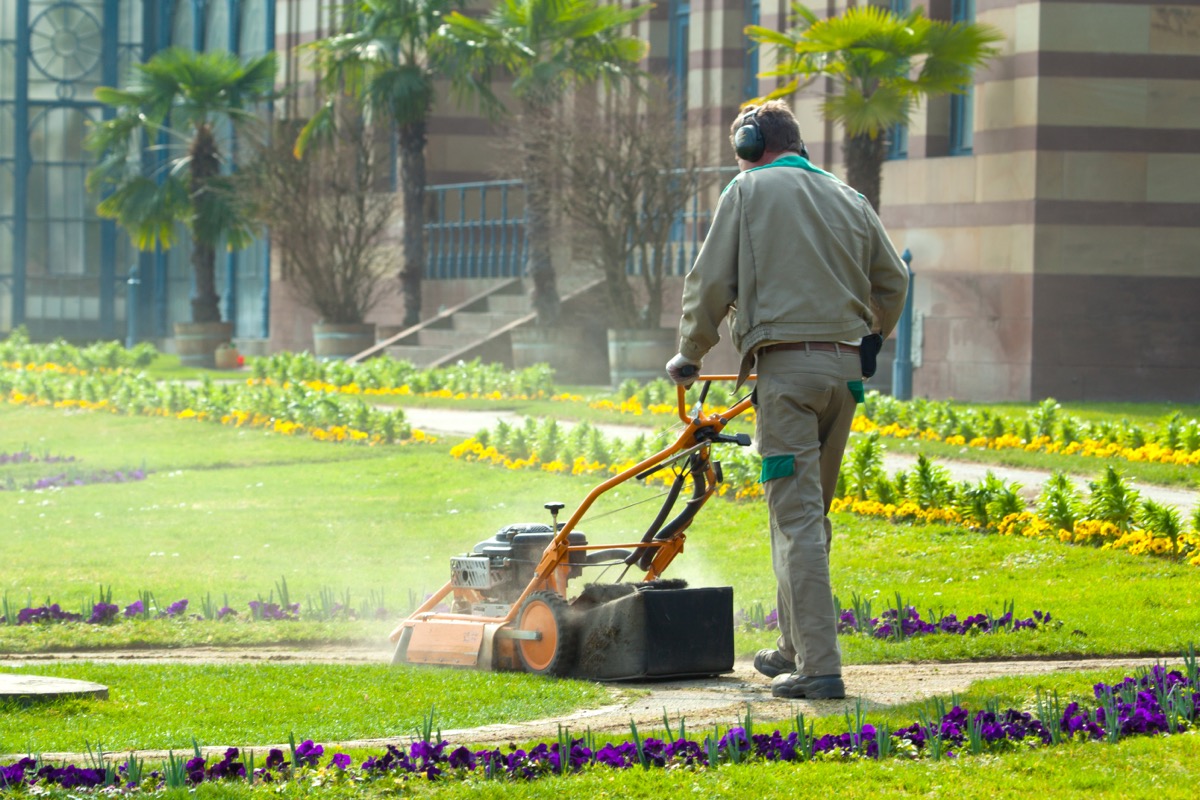
Fatal injury rate: 14 per 100,000
A total of 225 U.S. grounds maintenance workers died due to work-related injuries in 2018. The most common cause of on-the-job death for these professionals was car accidents, frequently when traveling between locations for work.
20
Heavy vehicle mechanics
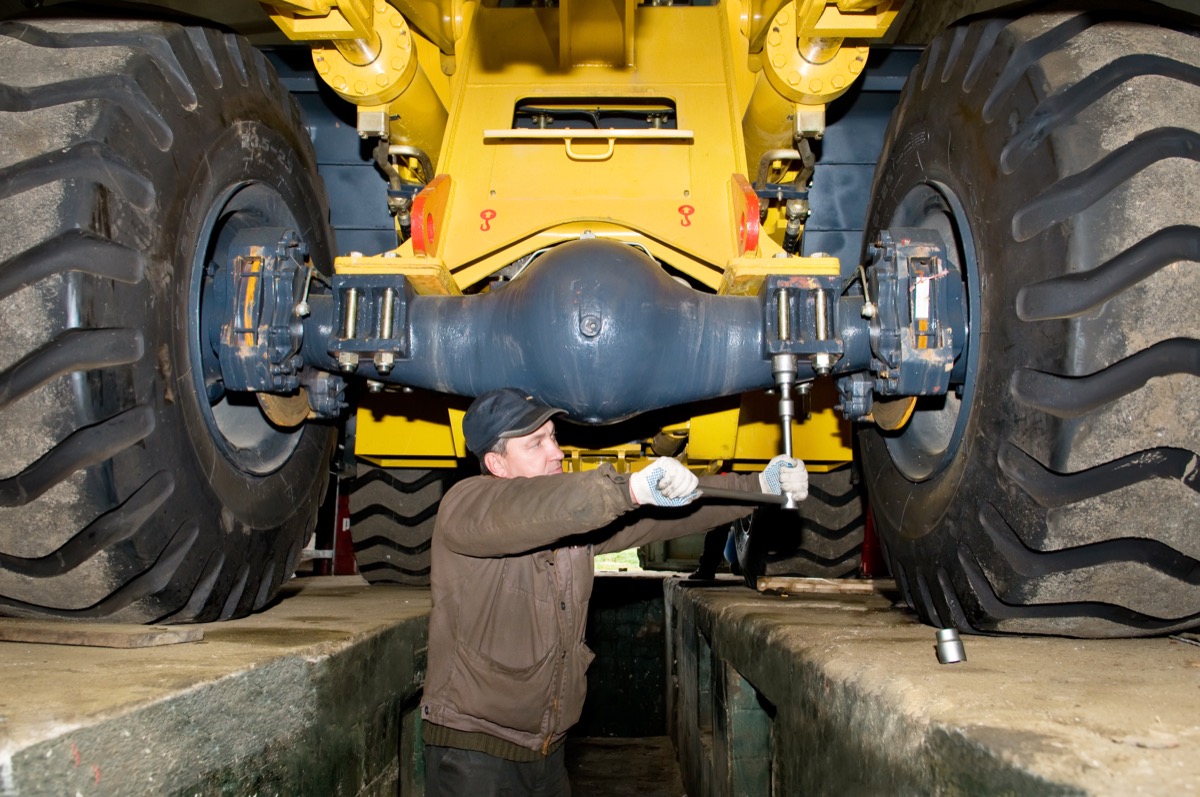
Fatal injury rate: 14 per 100,000
In 2018, 27 U.S. heavy vehicle mechanics died due to job-related injuries. Most of said injuries were related to traffic accidents.
19
Supervisors of mechanics

Fatal injury rate: 15 per 100,000
It’s not just mechanics who are at risk on the job—their supervisors are, too. In 2018, 46 mechanic supervisors died in work-related accidents in the U.S.; most of those accidents were related to violence caused by other people and animals.
18
Small engine mechanics

Fatal injury rate: 15 per 100,000
While transportation accidents accounted for most of the eight on-the-job fatalities among U.S. small engine mechanics in 2018, “violence and other injuries by persons or animals” made up the rest.
17
Cement masons

Fatal injury rate: 17 per 100,000
Cement masons, who pour and finish concrete for residential and municipal projects, lost 11 workers to on-the-job accidents in the U.S. in 2018. Most of these deaths were attributable to slips and falls.
16
Highway maintenance workers

Fatal injury rate: 18 per 100,000
In 2018, 14 U.S. highway maintenance workers lost their lives on the job. The most common cause of death on the job among these workers? Traffic accidents.
15
Landscaping supervisors

Fatal injury rate: 18 per 100,000
A total of 48 landscaping supervisors—managers who supervise groundskeepers, landscapers, and other outdoor maintenance professionals—died in work-related accidents in the U.S. in 2018. Like many other professionals whose work keeps them outdoors, landscaping supervisors’ most frequent type of fatal workplace accident is falling.
14
Construction helpers
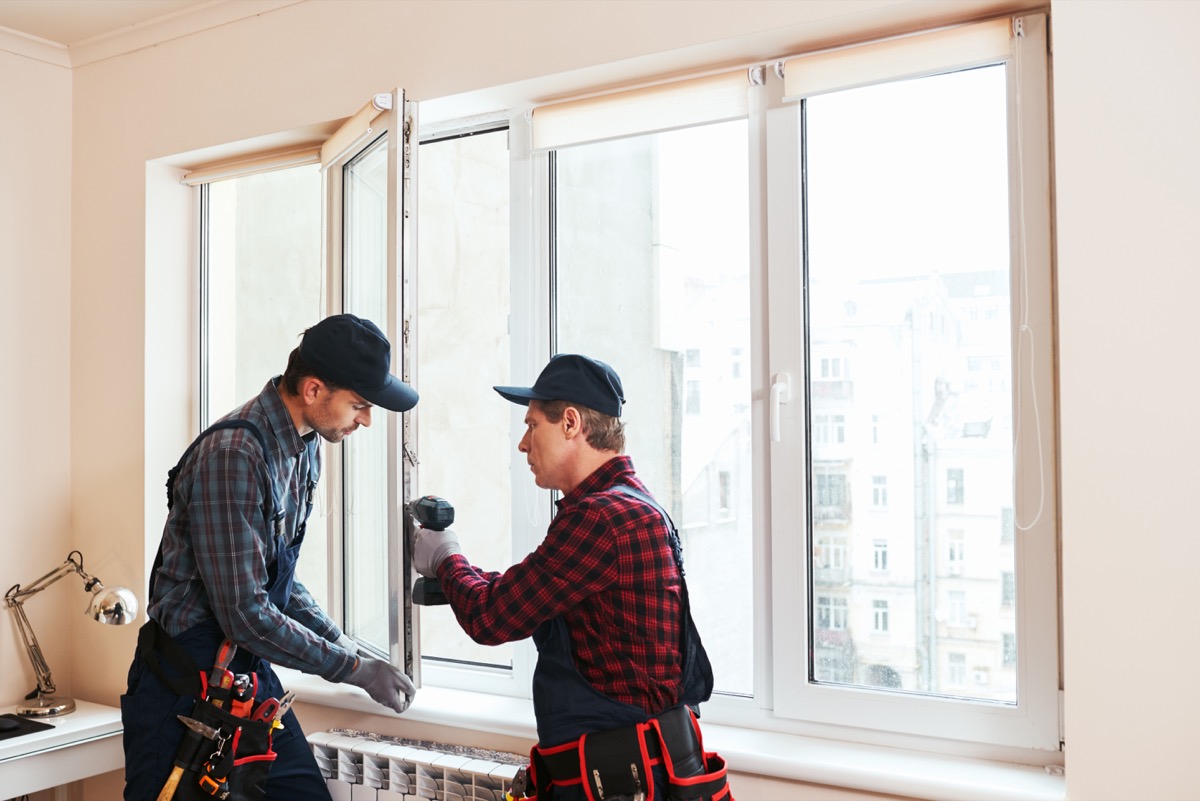
Fatal injury rate: 18 per 100,000
Construction helpers, who aid skilled tradespeople on construction projects, saw 11 of their colleagues die on the job in the U.S. in 2018. The most common cause of death for construction helpers is trips and falls on job sites.
13
Crane operators
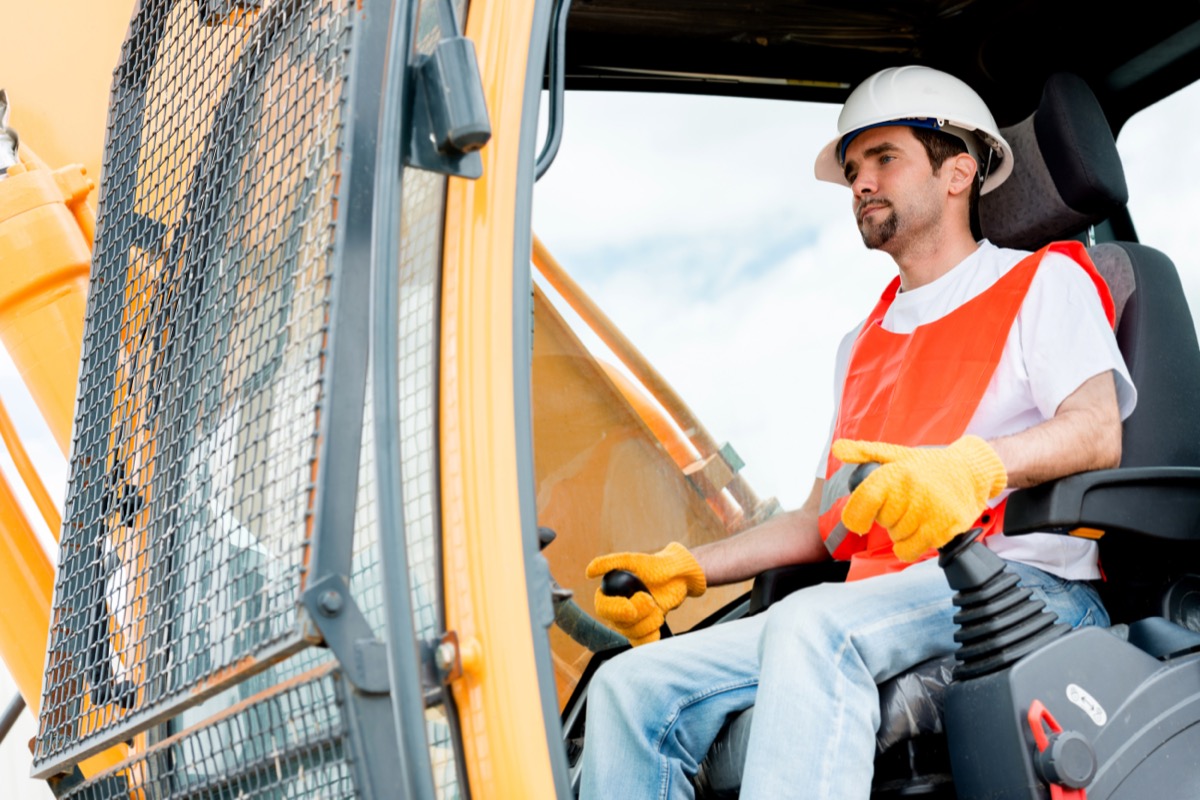
Fatal injury rate: 19 per 100,000
Crane operators have the 13th deadliest job in the U.S., according to U.S. Bureau of Labor Statistics data. In 2018, nine U.S. crane operators died in accidents related to their work, most of which involved being hit by vehicles or objects.
12
Crossing guards
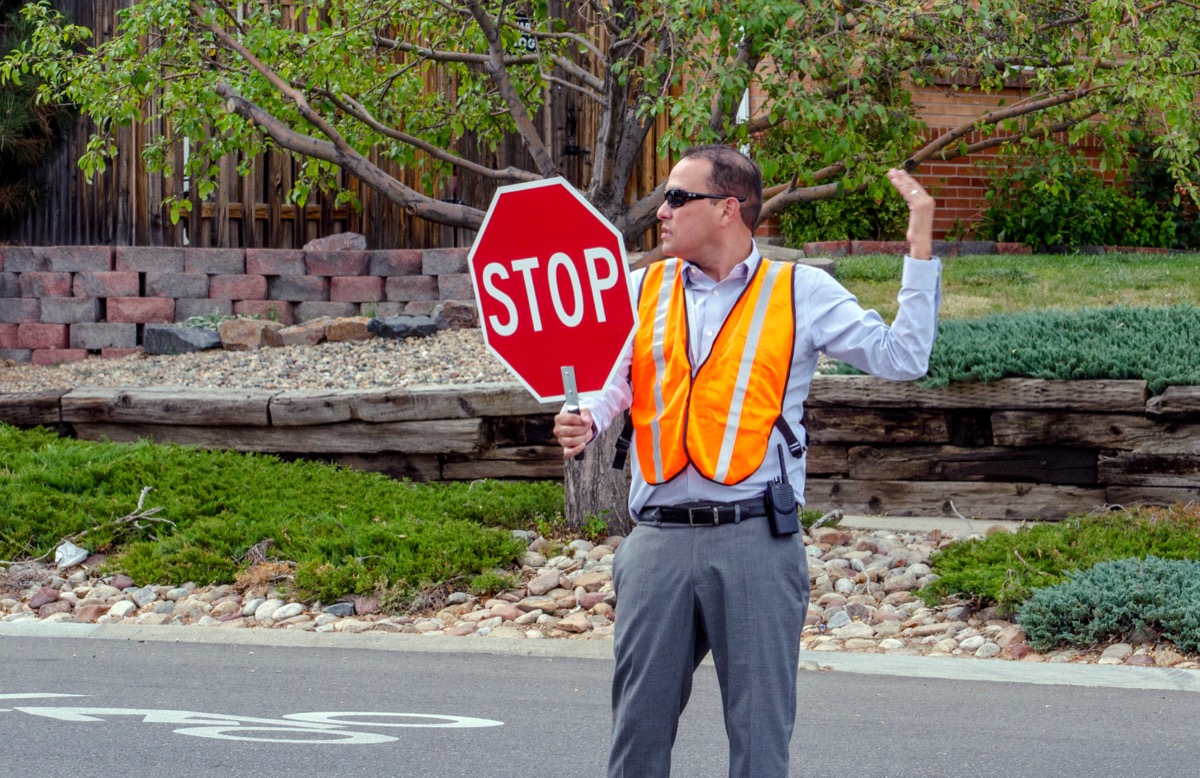
Fatal injury rate: 19 per 100,000
A total of 14 U.S. crossing guards were killed on the job in 2018. Due to the nature of their work, it likely comes as little surprise that the most common cause of death in the workplace for crossing guards is being struck by vehicles.
11
Agricultural workers
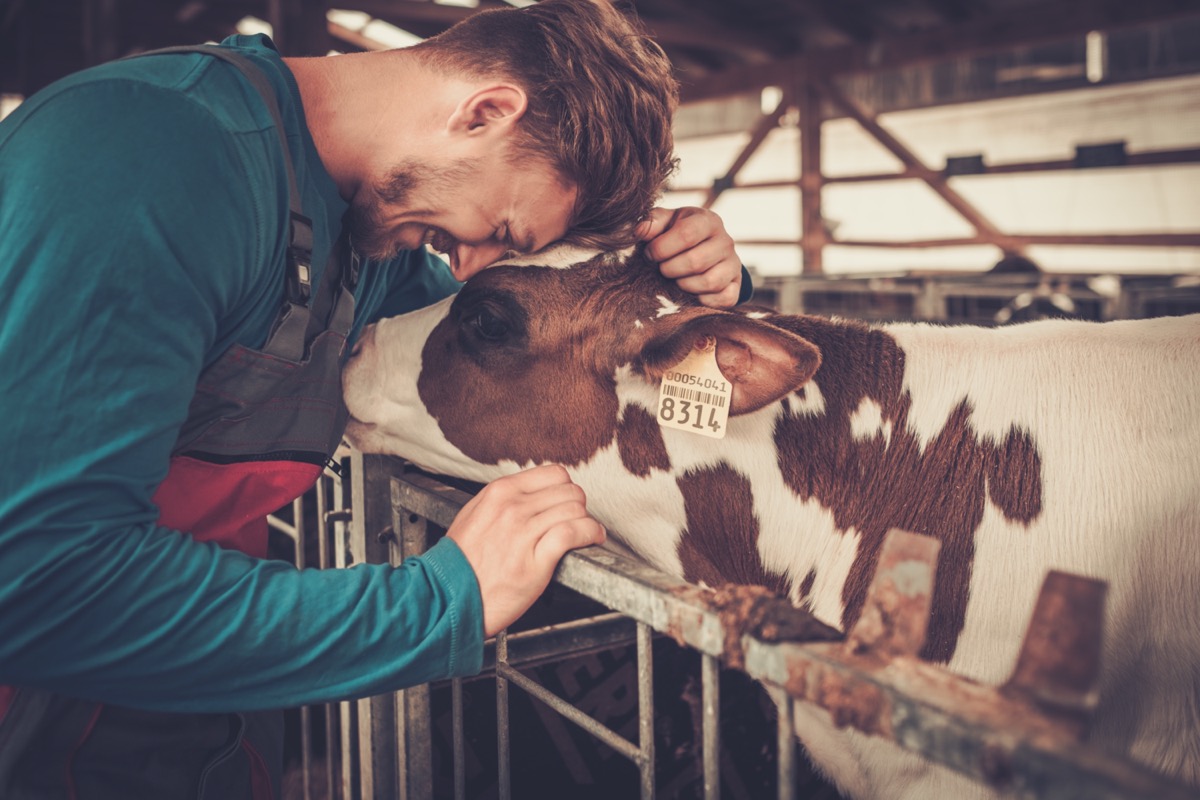
Fatal injury rate: 20 per 100,000
There were 157 deaths of U.S. agricultural workers—individuals who take care of livestock and crops but aren’t considered farmers—in 2018. The most common cause of death among agricultural workers wasn’t related to animals or heavy machinery, though—it was work-related transportation accidents.
10
Power line workers
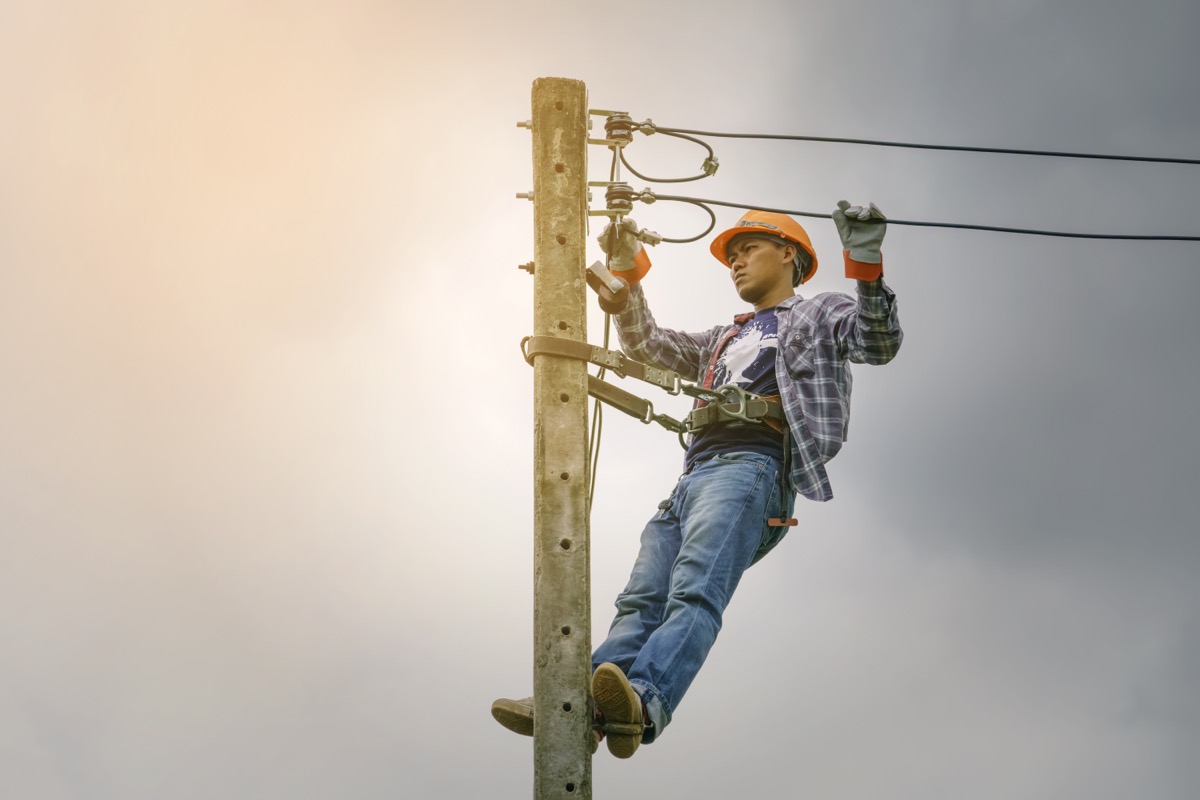
Fatal injury rate: 20 per 100,000
In 2018, 29 U.S. power line workers died on the job. While their occupation often includes working from high heights, the most common cause of death among power line workers isn’t falls, but electrocution.
9
Firefighting supervisors
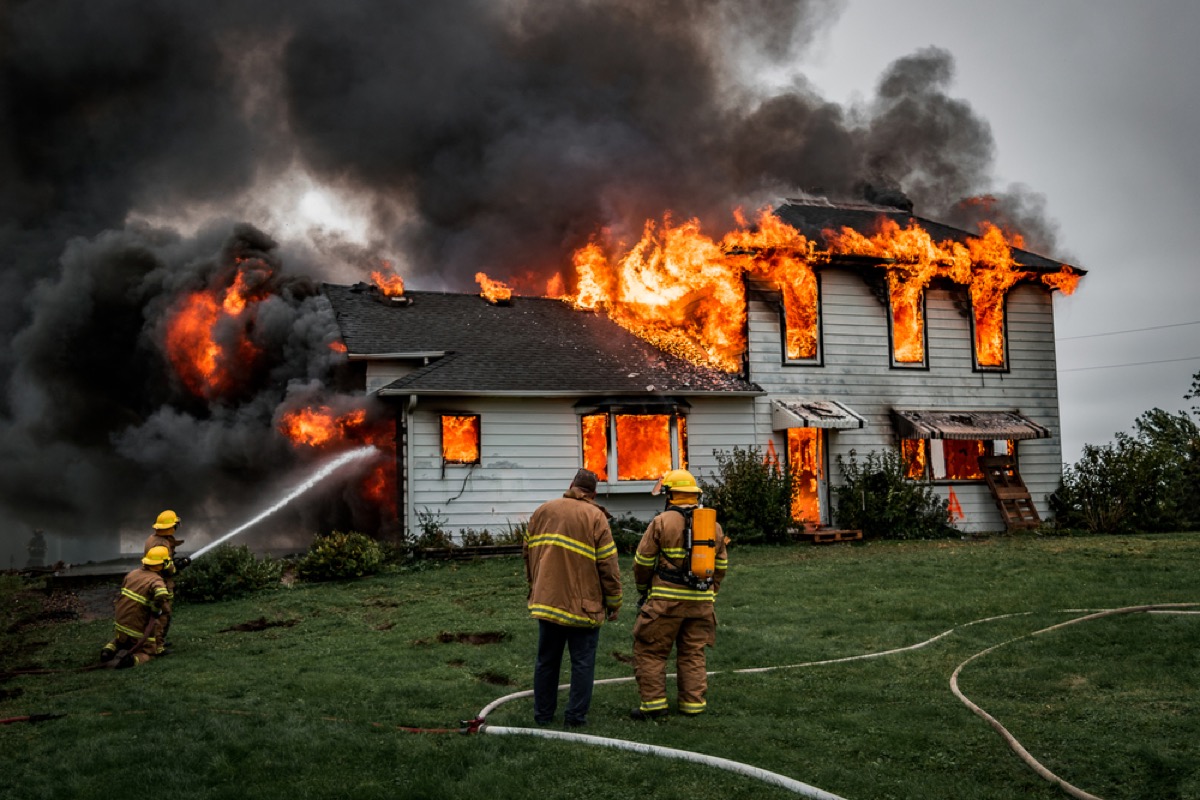
Fatal injury rate: 20 per 100,000
It’s not exactly surprising that firefighting supervisors—individuals tasked with coordinating and supervising other firefighters—are in a dangerous line of work. What is surprising, however, is that among the 14 U.S. firefighting supervisors who died on the job in 2018, most died in transportation accidents, followed by fires and explosions.
8
Farmers

Fatal injury rate: 26 per 100,000
Farmers have a surprisingly perilous job—but it’s not the animals they care for that are most often responsible for their untimely demises. Among the 257 U.S. farmers killed on the job in 2018, crashes were the most common type of fatal injury.
7
Delivery drivers

Fatal injury rate: 27 per 100,000
You’d be wise to tip generously the next time you order takeout, considering how perilous being a delivery driver can be. In 2018 alone, 966 delivery drivers died on the job in the U.S., the majority of whom perished in work-related car accidents.
6
Ironworkers

Fatal injury rate: 29 per 100,000
In 2018, 15 U.S. ironworkers died from injuries sustained on the job. Falls are the most common cause of job-related mortality for these professionals.
5
Garbage collectors
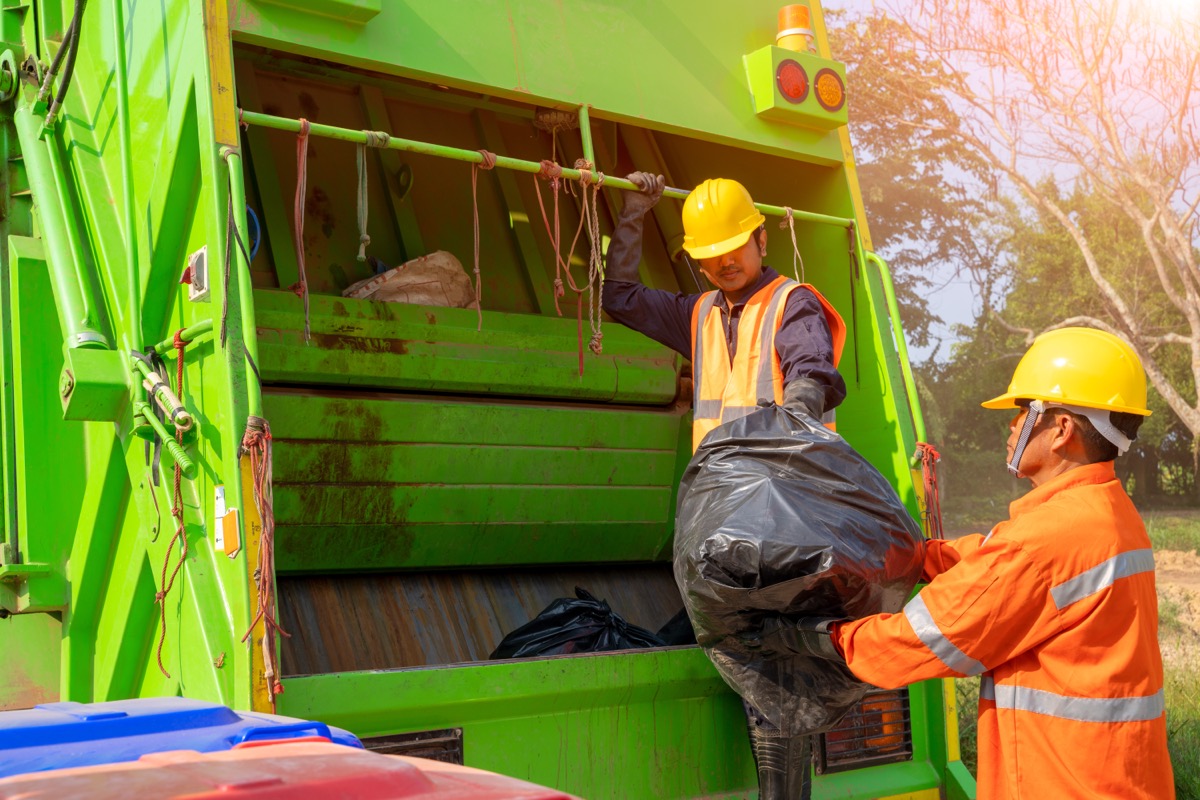
Fatal injury rate: 34 per 100,000
Your local trash collector is doing a more dangerous job than you might realize. In 2018, 37 garbage collectors died on the job in the U.S., the majority of whom died from injuries related to being hit by a garbage truck or other vehicle.
4
Roofers

Fatal injury rate: 41 per 100,000
You might want to be extra nice to that worker patching the shingles on your roof—they’re doing a surprisingly dangerous job, after all. In 2018, 96 U.S. roofers died on the jobs, with most succumbing to injuries related to slips, trips, and falls.
3
Derrick operators in oil, gas, and mining
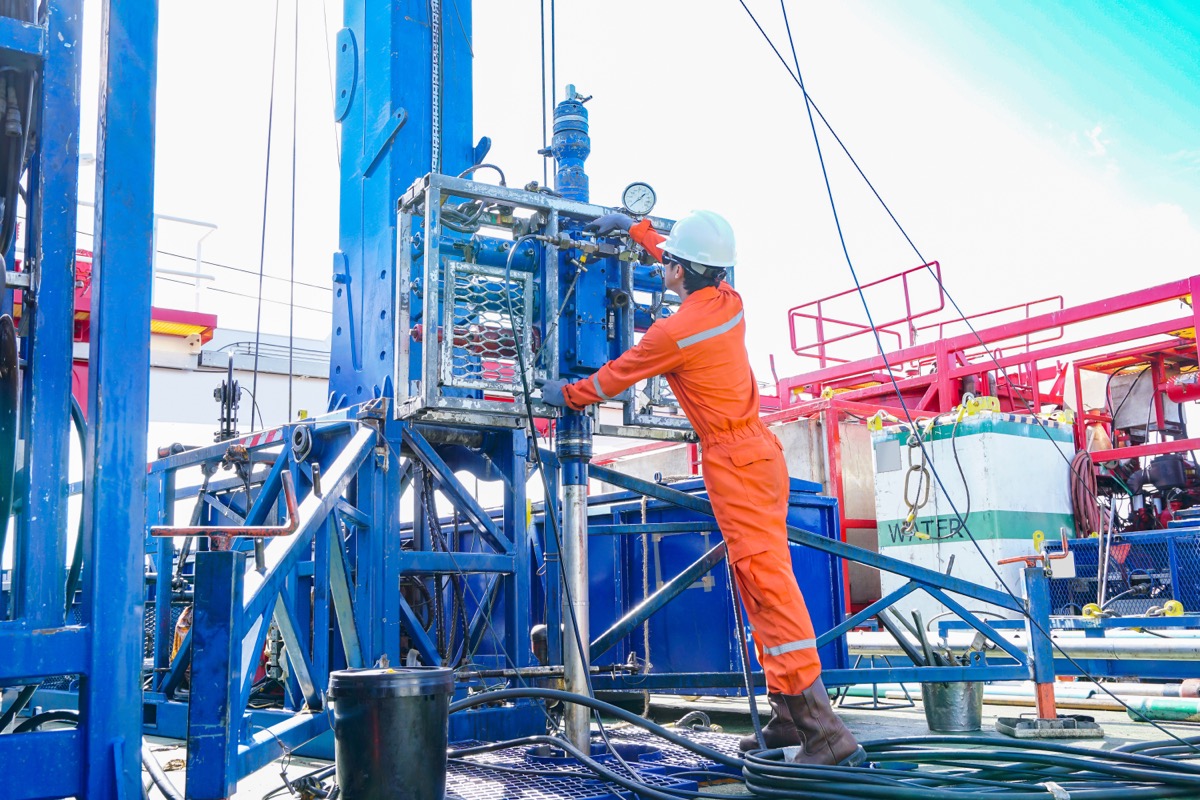
Fatal injury rate: 46 per 100,000
Derrick operators are the workers tasked with ensuring that drills used in industries like oil, gas, and mining, continue to run smoothly. In 2018, 70 derrick operators in the oil, gas, and mining industries died in work-related accidents, the majority of which were associated with either contact with equipment or transportation accidents.
2
Aircraft pilots and flight engineers

Fatal injury rate: 53 per 100,000
While pilots and flight engineers may be in a dangerous line of work, those who fly smaller planes are more likely to be involved in fatal accidents than the pilots of commercial aircrafts. In 2018, 70 pilots and flight engineers died on the job.
1
Logging workers
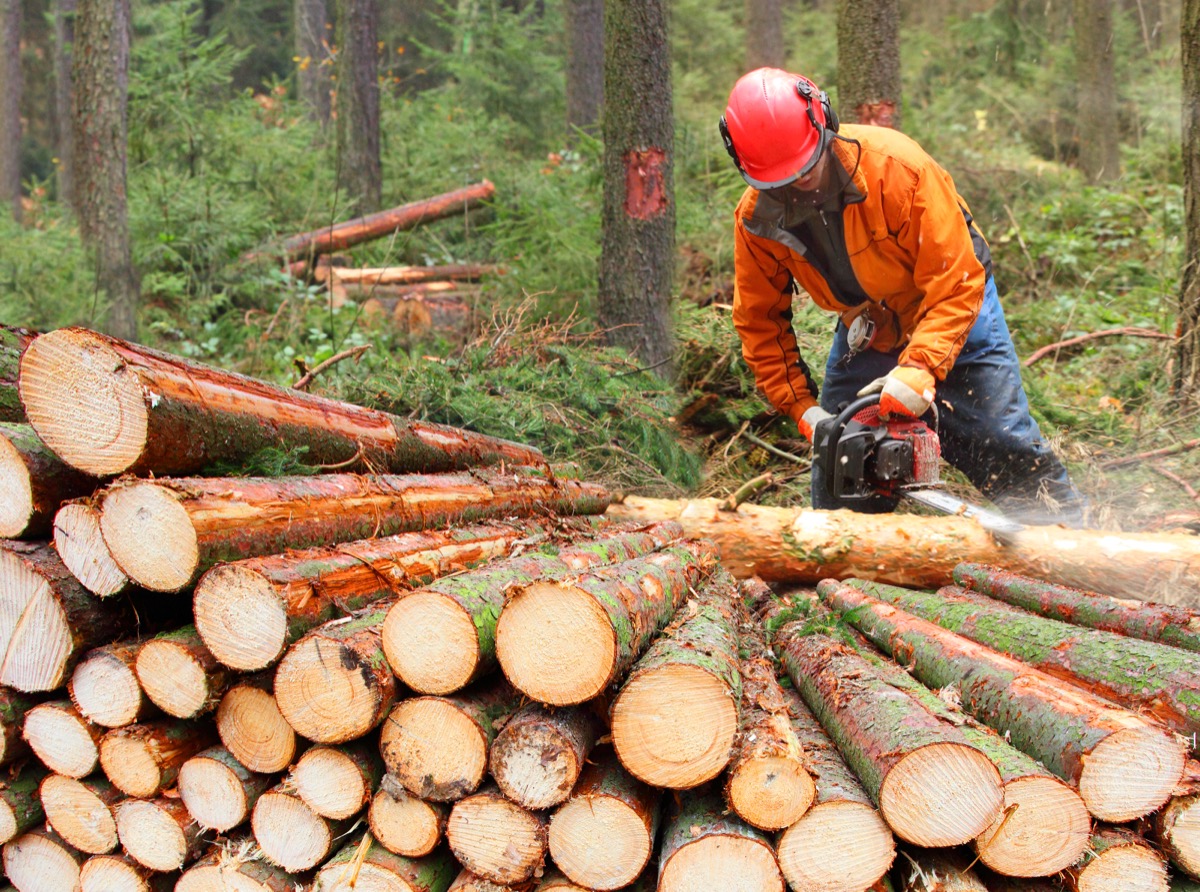
Fatal injury rate: 111 per 100,000
In 2018, 56 U.S. logging workers lost their lives on the job, with contact injuries from either logs or logging equipment causing most logging worker deaths. In fact, loggers are 33 times more likely to experience a fatal accident at work than the average U.S. worker.
RELATED: This Is How Much Money Makes You Middle Class in Your State, Data Shows.